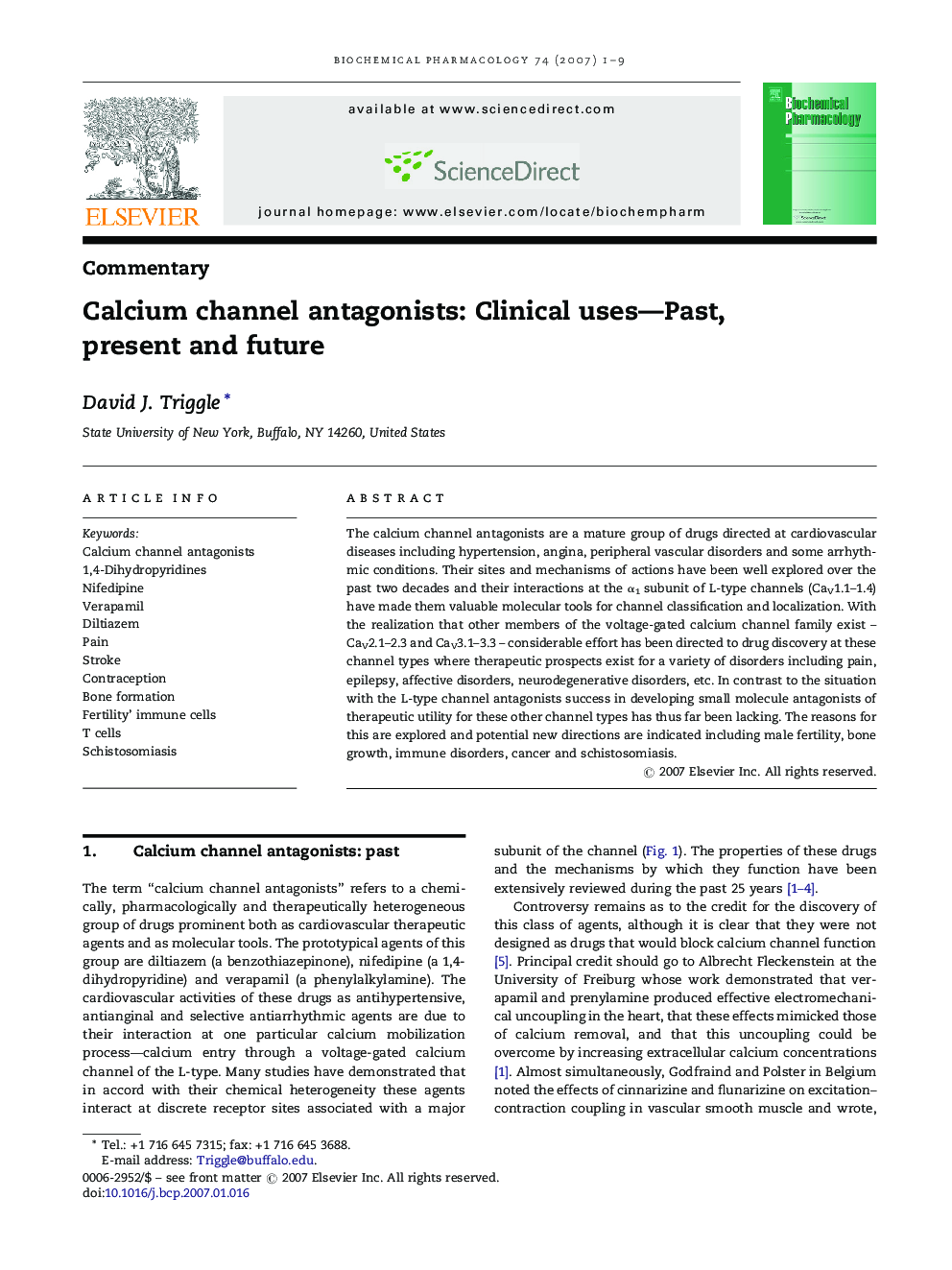| Article ID | Journal | Published Year | Pages | File Type |
|---|---|---|---|---|
| 2515534 | Biochemical Pharmacology | 2007 | 9 Pages |
The calcium channel antagonists are a mature group of drugs directed at cardiovascular diseases including hypertension, angina, peripheral vascular disorders and some arrhythmic conditions. Their sites and mechanisms of actions have been well explored over the past two decades and their interactions at the α1 subunit of L-type channels (CaV1.1–1.4) have made them valuable molecular tools for channel classification and localization. With the realization that other members of the voltage-gated calcium channel family exist – CaV2.1–2.3 and CaV3.1–3.3 – considerable effort has been directed to drug discovery at these channel types where therapeutic prospects exist for a variety of disorders including pain, epilepsy, affective disorders, neurodegenerative disorders, etc. In contrast to the situation with the L-type channel antagonists success in developing small molecule antagonists of therapeutic utility for these other channel types has thus far been lacking. The reasons for this are explored and potential new directions are indicated including male fertility, bone growth, immune disorders, cancer and schistosomiasis.
